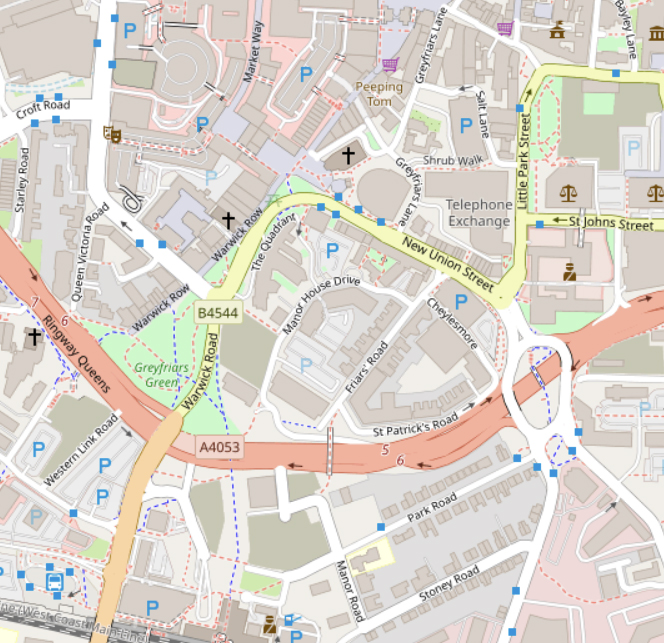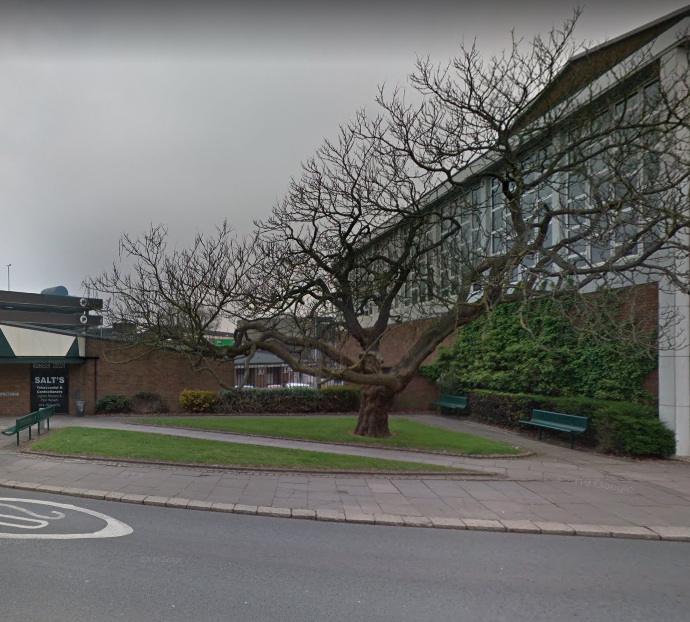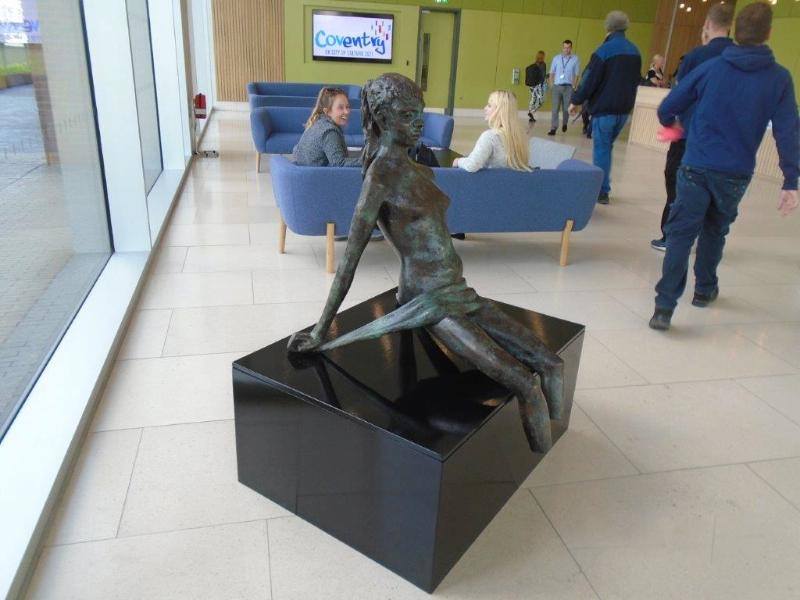
Today we have the fifteenth episode of Peter Walter’s series of lockdown walks “being a compendium of idle facts, hidden places and meaningless historiana gathered on walks within easy striding distance of the writer’s abode – and beyond”.
From her perch in the reception hall of the city council’s brick and glass office block, the Naiad stares glumly down at what should be a pool in front of her.
No water nymph should be without water but this one has been banged up inside the building for her own protection, and she won’t be getting her legs wet again until 2022.
Across Greyfriars Green, Trigger rears triumphant, as if he’s about to leap off his plinth and gallop madly across the grass. It had been thought that Coventry’s (almost) tribute to a certain banking black horse had gone to the knacker’s yard, but now he’s back. And the city breathes easier.

Public art’s a funny business. One minute it’s an absolutely must-have, the next it’s utterly forgotten. Who now remembers Coventry’s sixteenth century benefactor, the London merchant Sir Thomas White? Yet his statue still stands among the trees of Warwick Row. The date on his plinth is 1883 and the Welcome To The City Centre sign a yard or two away looks about the same vintage.
With 2021 fast approaching, it’s makeover time on the paving stones in front of Christ Church spire, not long ago the site of a fountain that never really worked properly. A new water feature is nearing completion, which somehow feels a bit rough on The Wave. Beneath its metallic blue sheen, the city’s newest visitor attraction is all about water, yet in lockdown all it can do is hope its future is not a stagnant one.
All that blue at least lights up one end of New Union Street, surely a serious contender for central Coventry’s most utilitarian and lifeless street. It has a temporary shops vibe about it, successfully smothering its only picturesque survivor, Cheylesmore Manor, behind workaday office buildings. And in the flaking hulk of the multi-storey car park at its far end it can truly boast one of the city’s least visitor-friendly ‘gateway’ buildings.
But turn the corner and there’s a surprise. The Indian bean tree that introduces you to Little Park Street is not from India. Neither does it produce beans. But the fizzing green of its foliage gives a real lift to the spirits after so much humdrum.

And there’s more. Further on, quality landscaping has given the Council House approaches a fresher, more ordered feel. And it’s nice to see that on the front of the building, some kind of large bird has made its nest on the sculptured head of what could be Edward the Black Prince, giving him a crown of sticks. Perhaps we might imagine it was a Phoenix, she of the city’s post-war coat of arms.
Just across the road, in a courtyard that’s now a demolition site, the Naiad once sat beneath a willow tree, up to her shins in a pool of water. She wasn’t so glum then.




